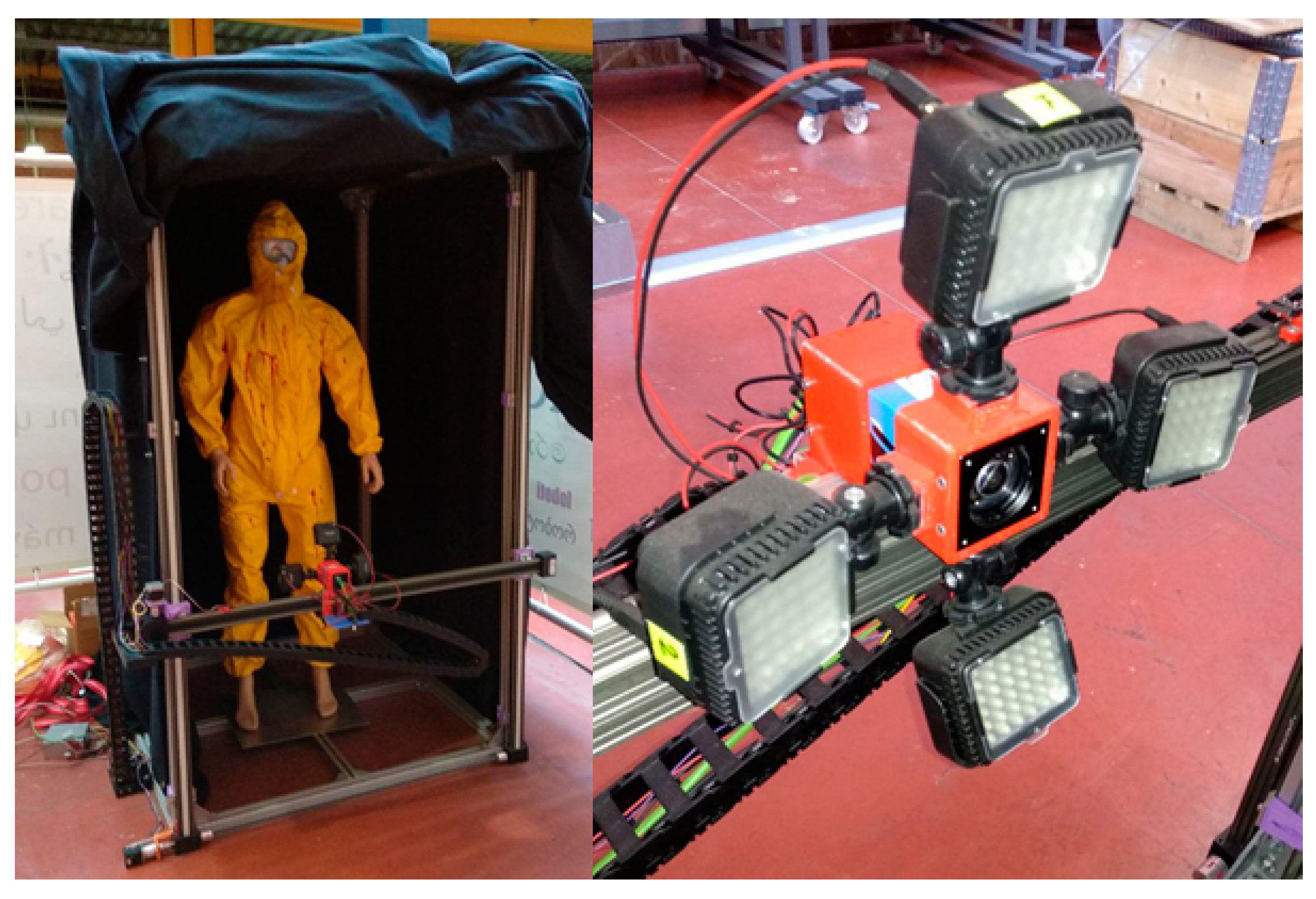Design of an Active Vision System for High-Level Isolation Units through Q-Learning

| AUTHORS | |
| JOURNAL | Special Issue “Applied Intelligent Control and Perception in Robotics and Automation” |
| ABSTRACT |
The inspection of Personal Protective Equipment (PPE) is one of the most necessary measures when treating patients affected by infectious diseases, such as Ebola or COVID-19. Assuring the integrity of health personnel in contact with infected patients has become an important concern in developed countries. This work focuses on the study of Reinforcement Learning (RL) techniques for controlling a scanner prototype in the presence of blood traces on the PPE that could arise after contact with pathological patients. A preliminary study on the design of an agent-environment system able to simulate the required task is presented. The task has been adapted to an environment for the OpenAI Gym toolkit. The evaluation of the agent’s performance has considered the effects of different topological designs and tuning hyperparameters of the Q-Learning model-free algorithm. Results have been evaluated on the basis of average reward and timesteps per episode. The sample-average method applied to the learning rate parameter, as well as a specific epsilon decaying method worked best for the trained agents. The obtained results report promising outcomes of an inspection system able to center and magnify contaminants in the real scanner system.
Conclusion and ImplicationsAn AI agent able to center blood samples has been designed through Reinforcement Learning. Representational choices such as reward shaping or the general adjustment of a custom problem to an MDP framework is a crucial issue to address, although resolutions are at present more art than science [16]. Trial and error formulas worked for the specific problem. Hyperparameter optimization helped determine the best combination of these values and should be tested for each application. The learning rate set up for stationary cases using the sample-average method, as well as a specific epsilon decaying method worked best for the trained agents. A prototype of an active vision system has been designed through Q-Learning in a simulation environment. |
| LINK | here |



